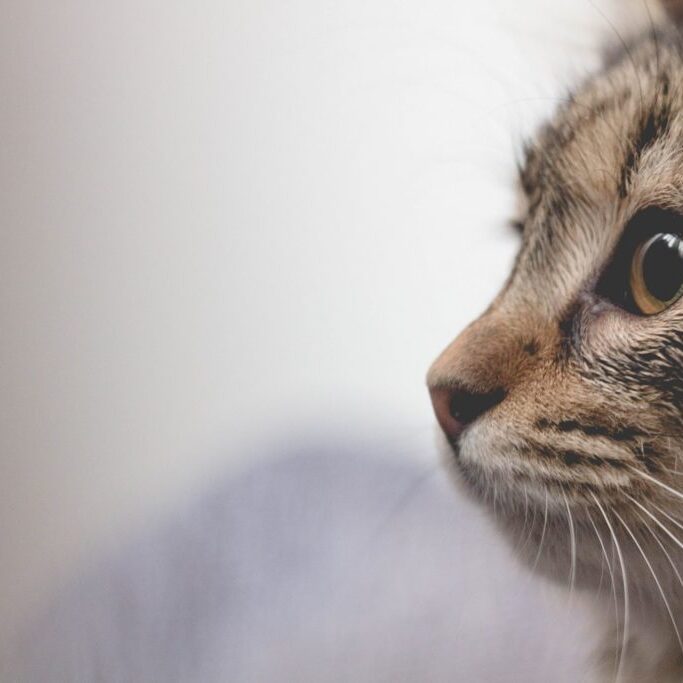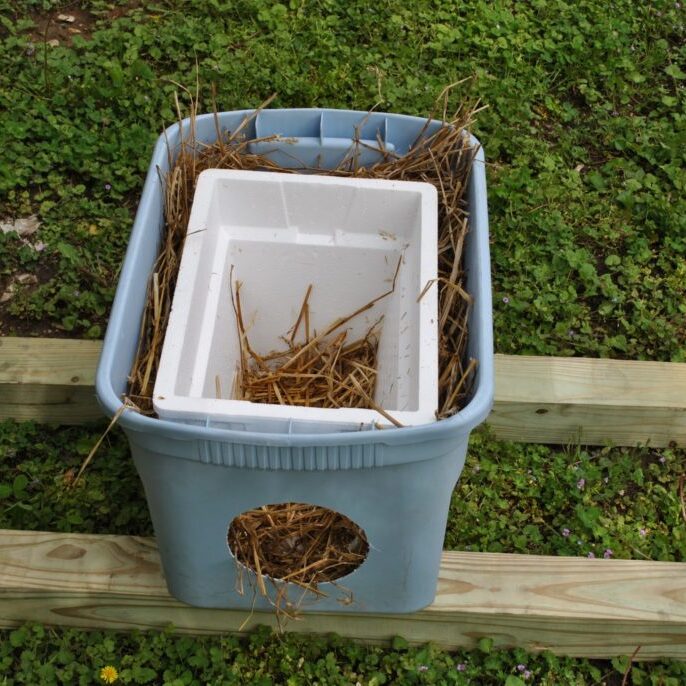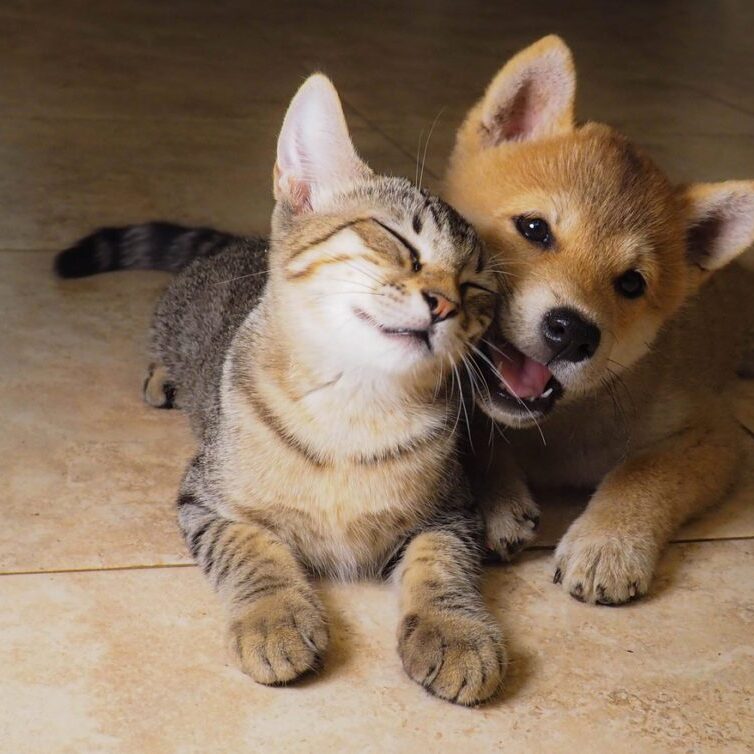Behavior & Symptoms
Everything Catnip – What We Know About This Feline Favorite

What’s the buzz about cats and catnip? Well, for starters, felines are literally led by their noses to this herb.
“Cats are drawn to catnip by its scent — not by its taste,” says Gary Landsberg, DVM, MRCVS, DACVB, DECAWBM, a board-certified veterinary behaviorist who heads the Fear Free Research and is based in Toronto, Canada.
Catnip (Nepeta cataria) is a popular member of the mint family and is sometimes called catmint. If cats could vote, catnip would overwhelmingly land No. 1 on the plant popularity list. The oil from catnip leaves contains a chemical called nepetalactone, an odor that closely resembles a substance present in the urine of a female cat. Yes, you read right: cat urine.
Catnip is quite popular, but not all cats dig this herb. Why do some cats roll over for catnip while others turn up their noses at it and stalk away? It’s genetic. Some cats have the “I love catnip” gene and others do not, even if they’re from the same litter.
“Most domestic cats respond to catnip as do lions and bobcats, but tigers do not respond as much,” says Dr. Landsberg. “We know that it is a genetic response to catnip with about 70 percent of adult cats attracted to its scent.”
Gender does not seem to be a factor, but age does. Young kittens under 12 weeks of age usually show no reaction to catnip. For cats who are old enough to respond, the oh-so-beckoning scent is inhaled, reaching the vomeronasal smell receptors to trigger a response that is pure kitty bliss.
When your cat sees that new catnip toy on the living room rug or watches you sprinkle organic crushed catnip on his cat tree, he may sniff or step up his response by plopping, rolling, rubbing his chin and cheeks, licking the catnip and rubbing his face in it. It only takes a pinch or two of fresh or dried catnip to elicit mild to total bliss responses.
Kitty High Duration
How long and how intense is the response to catnip? Again, it depends on the cat. This safe “high” usually lasts between 5 and 15 minutes. Unlike the chemical highs people may get from smoking marijuana or those nasty, next-morning headaches from drinking too many tequila shots, catnip is very kind to cats.
Catnip offers two major perks: it is not addictive and does not cause any kitty hangovers.
“Cats can’t overdose on catnip because catnip works by stimulating the body’s own natural endorphins,” Dr. Landsberg explains.
Catnip Is a Go-To Herb
He points out that catnip is effective in a variety of situations to bring out the best in cats through enrichment, distraction, enticement, reward-based training, and counterconditioning.
“Catnip as counterconditioning, for example, can be given to a cat in a car enroute to a veterinary clinic or only given when people come to the house to create a positive association when houseguests arrive,” he says. “Or, you can give catnip as a distraction to cats engaging in undesired behaviors like climbing on the counter or scratching the sofa.”
If you know she likes it, you can even use catnip to entice your cat to come toward you, especially if she’s hiding under a chair or some other inaccessible place. Encourage her to come out by laying down a little catnip trail. It’s a much kinder, safer, and more effective solution than trying to grab her and drag her out. (That’s never a good way to handle your cat.)
This olfactory stimulation offers healthy enrichment for many cats, including those in shelters, based on findings from other studies shared by Dr. Landsberg.
About 150 shelter cats were exposed to various scents, including lavender, prey scent from rabbits and catnip in a 2017 study published in Applied Animal Behaviour Science. Catnip ranked as the preferred scent in delivering much-needed environmental enrichment for these cats.
All of the clinic cats at Dr. Landsberg’s practice were what he called “catnip responders,” especially one named Switch, a gray tabby.
“He enjoyed catnip and always had a good response,” recalls Dr. Landsberg. “He left us alone and engaged himself by rolling in it and purring. He enjoyed 5 to 10 minutes of enrichment and then would settle on his bed and nap.”
Catnip and Mosquitos
Catnip doesn’t just trigger safe kitty highs. It turns out that catnip (Nepeta cataria)and silver vine (Actinidia polygama) may emerge as effective weapons against pesky mosquitos.
A new study published in February 2021 in Science Advances verifies what savvy tabbies knew all along: the oils in catnip and silver vine act as mosquito repellents. Cats instinctively know that rubbing against these plants will release oils that keep mosquitos at bay. The scents enable feline hunters to stay still and undetected until they are ready to pounce on prey.
Talk about smart cats!
“There is now a greater look into the science of how catnip (and silver vine) work,” says Dr. Landsberg. “The euphoric effect in these plant oils have long attracted cats, but now we are learning about the functional selection of these plants by cats to protect against mosquito bites and enable them to not have to swat at mosquitos while stalking prey.”
The study’s scientists tested the behavioral and neurophysiological effects that silver vine oils (called nepetalactol) and the catnip oils (called nepetalactone) had on 25 cats. They discovered that silver vine proved more potent as a mosquito repellent than catnip.
Check out this key paragraph from the study:
“We propose that silver vine and catnip responses provide repellency against (mosquitos) A. albopictus by transferring nepetalactol or nepetalactone from plants onto a cat’s fur,” says the study team. “Face rubbing against plant sources of the repellent will help to protect the face and head of the animal, as the mouth, eyelids, ears and nose of felines have relatively little fur and are therefore easy targets for mosquitos. Therefore, rolling is a functional behavior rather than an indicator of euphoria or extreme pleasure.”
Other Scents Cats Like
Catnip and silver vine are definitely go-to choices by cats. Silver vine is a climbing plant that grows up to 15 feet. This plant is native to the mountainous regions of China and Japan, but is now finding its way into many commercial cat products and gardens of cat lovers. Silver vine contains two feline attractants: nepetalactone and actinidine, making it more potent than catnip.
In a 2017 study published in BMC Veterinary Research involving 100 cats, researchers confirmed that catnip and silver vine (leaves and sun-dried fruit) are definitely the top two picks by indoor cats looking for outlets to combat boredom and stress.
However, some felines fancy Tatarian honeysuckle (Lonicera tatarica) and valerian (Valeriana officinalis), two rising cat scentsations.
The researchers concluded, “Future studies will be needed to evaluate if these plant materials can be used to improve the quality of life for confined cats, reduce distress, for training, socializing, or in trap-neuter-return programs.”
Let’s take a closer look at the lesser-known Tatarian honeysuckle and valerian root. Tatarian honeysuckle is a thick, dense shrub with white, pink, and red blossoms. It emits a stronger aroma than catnip, especially when the wood is moistened to activate its odor. However, practice safety as some berries from honeysuckle plants are toxic to cats, so treat your cat to veterinarian-approved cat toys containing honeysuckle or honeysuckle spray.
Valerian root is a perennial herb that sports white and pink flowers. Its actinidine acts as a stimulant, putting some cats into high-play mode and causing others to drool with delight. The best way to give your cat valerian root is inside veterinarian-approved cat toys or in finely chopped pieces. Be aware that cats dig the smell, but it emits a less-than-pleasant earthy odor to most human noses.
Finally, you can show off your green thumb to your favorite feline by growing catnip in a container pot inside or in your backyard garden. Catnip grows fast, so you can start by planting seeds. Make sure the plant gets plenty of sun and you keep the soil moistened. You can offer a fresh leaf to your cat or dry and crumble the catnip leaves. Just remember, your cat is attracted to the scent of catnip, not the taste.
Did you find this helpful? Share it!
Questions for your Vet
Catnip for people?
It may surprise you to learn that catnip acts as a sedative in people. Steeping catnip makes for a perfect cup of tea to sip to help some people fall asleep at night. So, if you have a high-energy cat, consider treating him to some catnip about 20 minutes before your bedtime. This herb should stimulate your cat to exercise enough to become tired enough to sleep through the night. Worth a try!
About VetScoop
Pets make our lives better. At VetScoop, we’re on a mission to return the favor by giving you access to trustworthy, science-based information so you can provide the best possible care for your pets.
Related Articles We Think You'd Like





